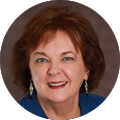Seminar: Designing the Routing and Signal Return Path of Digital PCBs

Susy Webb
Senior PCB Design Engineer
There are many ways to route a PC board, with some being much more effective for the signals than others. In this presentation, we will discuss a bit of the science to explain the reasoning for routing signals a certain way, and talk about the planning to address those issues. We will begin with an effective fanout plan that sets up what is to come, and we will also explore general routing order, priorities, differential pairs, length matching, and other concerns to avoid problems.
While great care is usually given to the routing of signals, often the signal’s return portion is the last thing decided, and sometimes not considered at all. Because the energy must return to its source, lack of concern for the return path can lead to lots of interference and poor signal performance. In this portion of the class, we will talk about the importance of designing that signal return path including where and how the energy flows, how it moves from layer to layer, containing that energy to a small area, the spacing needed between signals, and the interference caused when none of those things are controlled.
Agenda:
- Introduction to PCB routing: The setup and planning involved.
- Science behind signal routing: Explanation of the scientific principles influencing routing decisions.
- Effective fanout planning: Strategies for successful fanout planning.
- General routing order and priorities: Step-by-step routing order and setting priorities.
- Routing differential pairs: Techniques for routing differential pairs.
- Length matching considerations: Best practices for length matching.
- Designing the signal return path: Importance and design of signal return paths.
- Managing signal return path energy: Techniques for controlling energy flow and layer transitions.
- Avoiding common problems: Strategies to contain energy and avoid antennas.
- Signal spacing and interference control: Optimal spacing between signals and minimizing interference.
Date and time:
Thursday September 19th, 2024
9:00 AM to 4:00 PM PT
Location: This event will be hosted online via Zoom
Early bird price: $195 through August 24th (then $245)
About Susy Webb
Susy Webb is a senior PCB design engineer with over 45 years of experience. Her career includes experience in coastal and oceanographic oil exploration and monitoring equipment, point-to-point microwave network systems, and CPCI and ATX computer motherboards. Webb is a regular speaker at PCB Conferences, IPC events, international design conferences, and has consulted for individual companies and groups as well for the last 18 years.. Her presentations discuss practical implementation of complex engineering concepts into board layout, and methods to improve the overall design and flow of printed circuit boards. She is CID certified, a former writer/columnist for Printed Circuit Design and Fab magazine, a chapter writer for Clyde Coombs “Printed Circuits Handbook”, one of the writers of the PCB-EDU book and curriculum, and one of the judges for the annual TLA competition. Webb is also an active member of the PCEA Executive Board and education committees, and is a member and past president of the Houston Chapter of the Designer’s Council.



